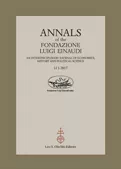Growing volatility of commodity prices has been both symptom and factor of instability over the past years. The problem, however, is not new. In the interwar period, it already attracted the attention of Keynes, who ascribed it to the lack of storage of surplus stocks. According to Keynes, markets for raw materials and foodstuffs are inherently unstable. Compared with other forms of wealth, particularly financial assets, commodities are unattractive for private agents since they not only yield nothing but entail high carrying costs. In order to supplement inadequate private storage and to provide a buffer between production and supply and between consumption and demand, Keynes proposed to arrange public storage of commodities in buffer stocks under the management of an international organization. Between 1942 and 1944, his plans for a Commodity Control were widely discussed and repeatedly redrafted, but, like the Clearing Union proposal, they were eventually set aside. This research analyses the peculiar institutional design of Keynes’s postwar commodity schemes.



